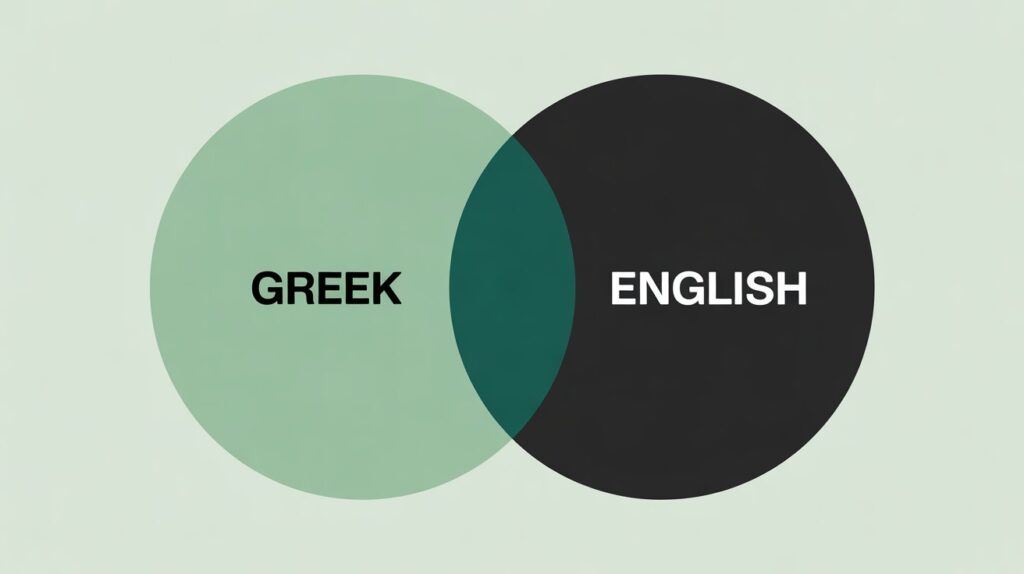Summary table
This table summarizes the parallel letters between the two alphabets.
| Greek letter | English Equivalent | |
|---|---|---|
| alpha | α | a |
| beta | β | b |
| gamma | γ | g, y |
| delta | δ | d |
| epsilon | ε | e |
| zeta | ζ | z |
| eta | η | long a |
| theta | θ | th |
| iota | ι | i |
| kappa | κ | c, k |
| lambda | λ | l |
| mu | μ | m |
| nu | ν | n |
| xi | ξ | x |
| omicron | ο | o |
| pi | π | p |
| rho | ρ | r |
| sigma | σ | s |
| tau | τ | t |
| upsilon | υ | i, v, y |
| phi | φ | f, ph |
| chi | χ | c, k |
| psi | ψ | ps |
| omega | ω | o |
| – no analog – | h, j, q, u, w |
Unusual Greek Letters: Gamma (γ) and Upsilon (υ)
Both of these letters sometimes take on the role of an English y. Gamma also takes on the role of g, and two gammas in a row sound like “ng.” Upsilon also stands in for i or v. There are two simple mnemonics to remember the varied role of these two letters:
StroNG GuY = contains all three possible sounds made by gamma
IVY = contains all three possible sounds (or spellings) made by upsilon
We will discuss these two challenging letters in more detail in a future article dedicated to Koine Greek pronunciation.
English letters not in Koine Greek: u, h, j, q, w
Although none of these letters are in Koine Greek, several of them had parallels in older versions of the language. See this article on The Forgotten Letters of the Greek Alphabet for more information. The letter “u” will be covered in a future article on Koine Pronunciation, but here is a brief explanation of the other four.
Rough breathing mark: H
Ancient Greek didn’t have a separate letter for ‘h’. It used a mark over vowels to indicate an ‘h’ sound at the start of a word. This sound was present in Classical (Attic) Greek but was fading from use by the Koine period of the first century. English keeps the ‘h’ from Latin. “History” in English comes from Greek ἱστορία (historia). In old Greek, it started with /h/, but in Koine, it often dropped to /ɪstoˈria/, like the silent ‘h’ in “honor.”
The last letter: J
Historically, j was the last letter added to the alphabet. The name “Jesus” in English comes from Greek Ἰησοῦς (Iēsous) where the iota was used instead of a j equivalent.
Superfluous Q
Q comes from the archaic Greek letter koppa (Ϙ), used for a k sound before back vowels. By classical and Koine Greek times, it was dropped because kappa (κ) handled that job. Latin kept Q for the /kw/ sound. The English word “question” is from Latin quaestio; the Greek equivalent ζήτησις (zētēsis) uses zeta and kappa instead.
Digamma: The forgotten W
There was no W in Koine Greek. The archaic letter digamma (Ϝ) made the w sound but was lost as the sound disappeared or merged. English W came from medieval Latin ‘uu’ for w. For example, the English word “wine” is from Greek οἶνος (oinos), originally “woinos” with digamma, but by the Koine (and even the earlier Classical period) Greek had lost the w.
